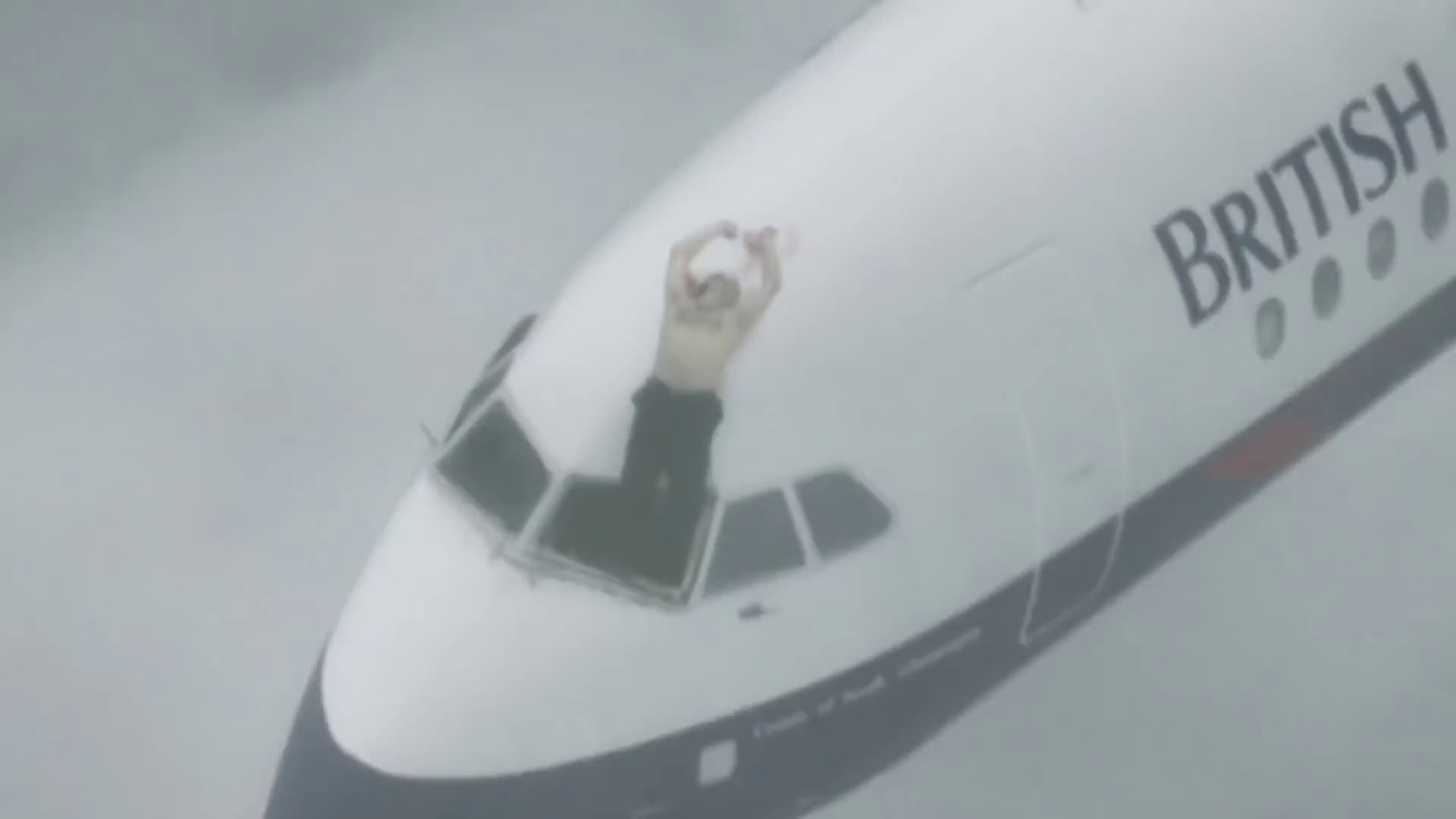On the 10th of June, 1990, British Airways Flight 5390 was on its way to Malaga, Spain. Without warning, two of the six cockpit windows exploded from their frames. As a result, the sudden decompression of the cabin caused a massive rush of air, which sucked the captain out of the cockpit.
Miraculously, the crew on board were able to bring the aircraft safely to the ground with no loss of life.
Flight Details
The British Airways BAC One-Eleven with registration G-BJRT was operating flight BA5390 from Birmingham Airport, UK to Malaga, Spain. Who would have thought that the flight which started as a routine flight would be one of the most remarkable and terrifying incidents in aviation history?
Flight BA5390 was under the command of Captain Tim Lancaster who had 11,050 total flight hours including 1,075 on type. The 43-year-old captain was accompanied by First Officer Alastair Atchison, who had 7,500 total flight hours under his belt including 1,100 hours on type. Onboard the flight were 81 passengers and 6 crew members.
Though the two pilots hadn’t worked together before, they together guided the aircraft through a smooth, completely normal take-off at 7:20 UTC time.
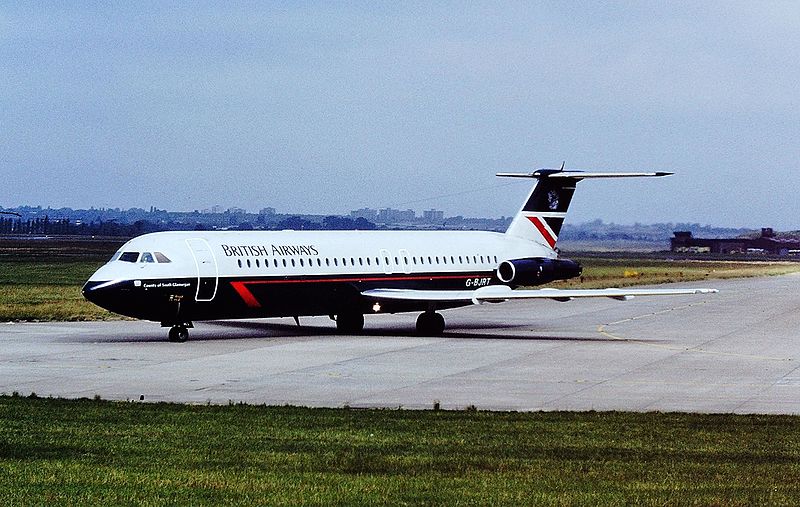
Everything was going smoothly until the plane reached an altitude of 17,300 feet. At this stage both pilots had released their shoulder harnesses, using the release bar on the buckle, and the captain had loosened his lap strap. All of a sudden at 17,300 feet, two of the cockpit windows exploded outwards sending out a loud bang.
As a result, condensation mist filled the cabin, indicating that an explosive decompression had occurred. The sudden decompression of the cabin caused a massive rush of air, which sucked the captain out of the cockpit. The force of the wind was so strong that it tore off his headset and oxygen mask, and he was left hanging outside the plane, with only his legs inside the cockpit. Additionally, the flight deck door had been blown onto the flight deck.
Steep Dive
The captain’s feet were jammed against the controls, forcing the plane into a steep dive. F/O Atchison faced a serious struggle to operate the aircraft which was being affected by the gale-force winds.
Mr Ogden, the No. 3 steward who was on the cabin door rushed onto the flight deck and grabbed Captain Lancaster’s legs, and held him around his waist, while the purser removed the debris of the door and stowed it in the forward toilet. The other two cabin crew members instructed the passengers to fasten their seat belts, reassured them, and took up their emergency positions.
With the help of other cabin crew members, Mr Ogden finally hauled Captain Lancaster’s legs away from the controls. The F/O could now bring the aircraft out of its dive, but he hesitated for a few more seconds before doing so to allow the plane to get down low enough that the air would be breathable without an oxygen mask. In order to do so, the F/O immediately took control of the aircraft and initiated a rapid descent to FL110.
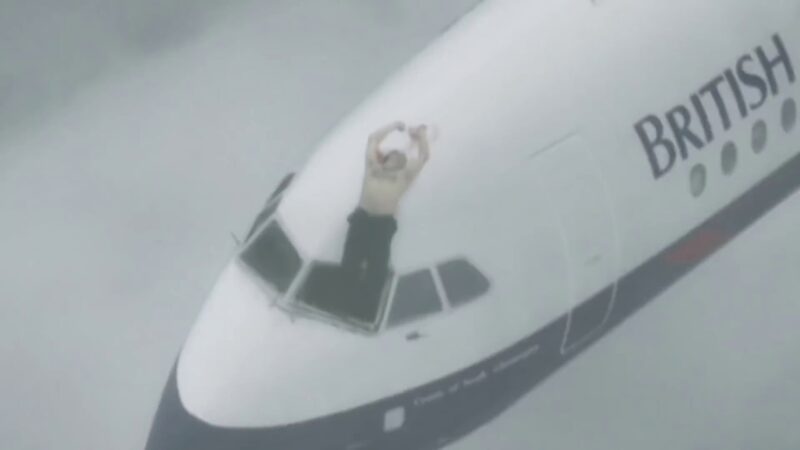
First Officer Atchison re-engaged the autopilot and made a distress call, but he was unable to hear its acknowledgement due to the noise of rushing air on the flight deck. He could not hear anything being said on the radio. After some delay in establishing two-way communications, the Bristol Sector Controller was not immediately aware of the nature of the emergency, leading indirectly to a delay in the initiation of the British Airways Emergency Procedure Information Centre plan.
Now that the plane was no longer diving, the purser re-entered the flight deck. After hooking his arm through the seat belts of the fourth crew member’s jump seat located behind the left-hand pilot’s seat, he was able to assist the No. 3 steward in restraining the captain. The two men tried to pull the captain back within the aircraft, but the slipstream frustrated their efforts.
In the meantime, the No. 2 steward entered the flight deck, relieved the No. 3 steward, and grasped the captain’s right leg, which was stuck between the cockpit coaming and the control column, while his left leg was wedged against his seat cushion. The steward strapped himself into the left jump seat, grasping both of the captain’s legs, but not before he had moved a further 6 to 8 inches out of the window frame. He held him by the ankles until after the aircraft had landed.
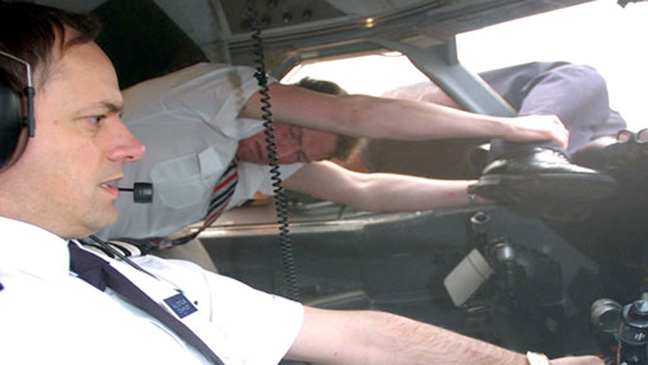
The F/O requested radar vectors to the nearest airport as he was without any charts or other reference materials, all of which had disappeared out of the window. He was offered a runway at nearby Southampton airport, which was an unfamiliar airport to him, but really the only option if he wanted to get on the ground quickly. After verifying that there was sufficient runway length available for a landing, the F/O manoeuvred the aircraft onto a visual final approach to runway 02 and completed a successful landing and stop on the runway.
Evacuation, Injuries and Aircraft Damage
As soon as the aircraft came to a stop on the runway, passengers were disembarked from the front and rear airstairs while the airport and local fire services recovered the captain back into the aircraft from his position half out of the windscreen frame. Captain Lancaster was taken to Southampton General Hospital with frostbite, bruising, shock, and fractures to his right arm, left thumb, and right wrist.
The other crew members and passengers were medically examined but apart from one steward who had cuts and bruising to his arm, there were no other injuries.
During the BA5390 incident, the aircraft, a BAC One-Eleven 528FL, suffered significant damage. The cockpit windscreen shattered and was missing. The sudden decompression of the cabin caused items within the cockpit, such as papers and manuals, to be sucked out of the aircraft as well.
Moreover, the High Frequency aerial, stretching from a forward position on the top of the fuselage to a fitting close to the tailplane bullet, was missing and the fittings were damaged. There was a dent on the top left side of the fuselage approximately 3 inches long about 3 feet above the overwing emergency exit and a scratch on the top left side of the fuselage. Minor damage to several items on the flight deck was also discovered.
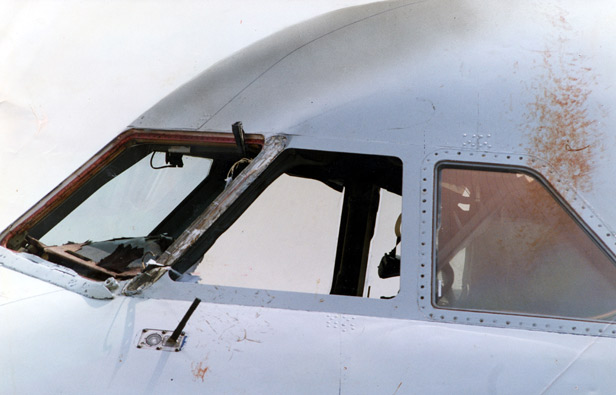
Investigation and Findings
Following the incident, an investigation was launched by the Air Accidents Investigation Branch (AAIB) of the UK. The investigation found that the windscreen of the plane had been improperly installed during maintenance work, which led to the catastrophic failure of the cockpit windscreen during the flight.
The investigation revealed that the windscreen had been replaced the night before the flight, but the mechanics had used the wrong bolts, which were too short to hold the windscreen in place. It was found that 84 bolts used in the aircraft were 0.026 inches (0.66 mm) smaller in diameter than the required specification. Additionally, the remaining six bolts were of the correct diameter but were 0.1 inches (2.5 mm) shorter than required.
This resulted in the windscreen detaching from the plane at a critical point during the flight, causing a sudden decompression of the cabin and the captain being sucked out of the cockpit.
During the investigation, it was found that the previous windscreen had also been fitted using incorrect bolts, which were replaced by the shift maintenance manager on a like-for-like basis without checking the maintenance documentation, as the plane was due to depart shortly.
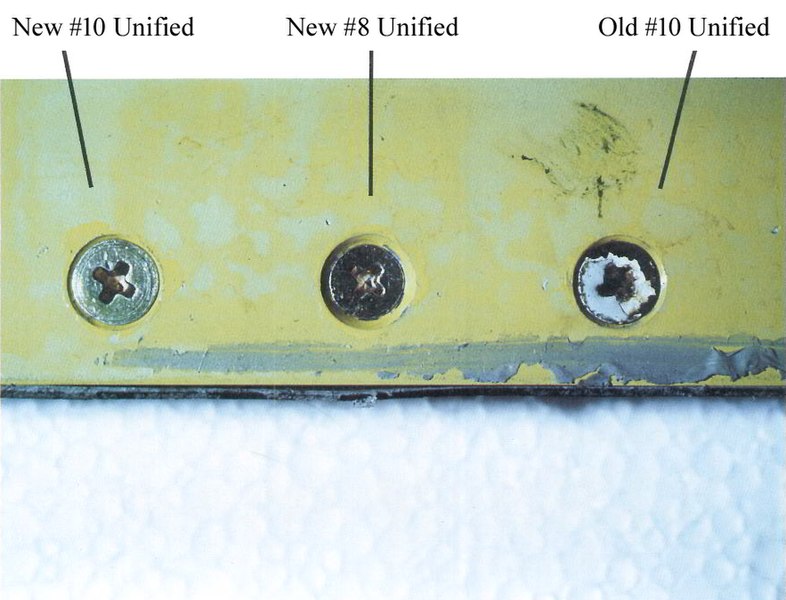
The investigation also found that the flight crew had not been trained to handle such an incident and that the cockpit design did not provide adequate protection against the possibility of the windscreen detaching from the plane.
According to AAID, the following factors contributed to the loss of the windscreen:
- A safety critical task, not identified as a ‘Vital Point’, was undertaken by one individual who also carried total responsibility for the quality achieved and the installation was not tested until the aircraft was airborne on a passenger-carrying flight.
- The Shift Maintenance Manager’s potential to achieve quality in the windscreen fitting process was eroded by his inadequate care, poor trade practices, failure to adhere to company standards and use of unsuitable equipment, which were judged symptomatic of a longer-term failure by him to observe the promulgated procedures.
- The British Airways local management, Product Samples and Quality Audits had not detected the existence of inadequate standards employed by the Shift Maintenance Manager because they did not monitor directly the working practices of Shift Maintenance Managers.
Aftermath
Following the investigation, the AAIB made several recommendations to British Airways, the manufacturers and the maintenance team. British Airways’ engineering, safety and training procedures were reinforced and the incident became a prominent case study for engineers, both within the company and beyond.
As a result of the incident, every aircraft of a similar design underwent thorough inspection, which uncovered at least two other planes with windscreens secured by the wrong bolts. This discovery prompted the correction of the error, preventing the possibility of another, potentially more fatal, cockpit blowout.
The crew members, particularly the flight attendants, were praised for their quick thinking and actions in securing Captain Lancaster and preventing him from falling out of the aircraft.
Alastair Atchison, the First Officer, and the two cabin crew members, Susan Gibbins and Nigel Ogden, were honoured with the Queen’s Commendation for Valuable Service in the Air. However, Ogden’s name was mistakenly left out of the published supplement. Atchison was also recognized with a 1992 Polaris Award for his remarkable airmanship.
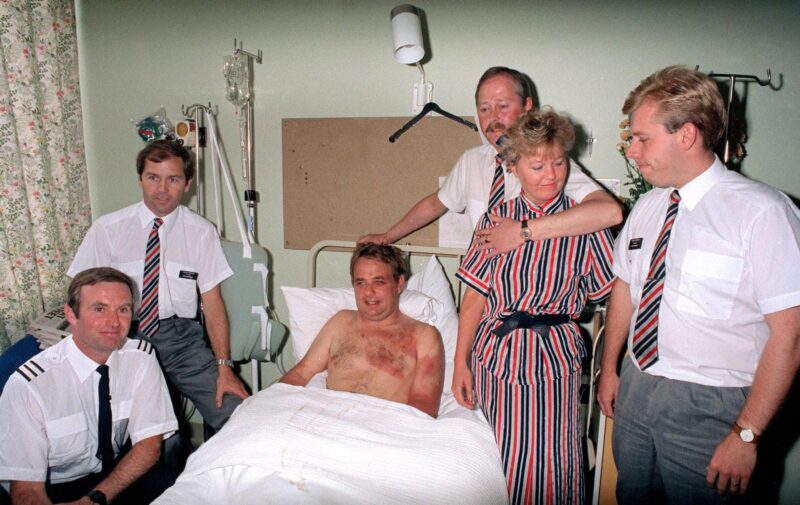
Despite the traumatic experience, Captain Tim Lancaster returned to flying just six months after the incident. He became an advocate for improving aviation safety and has since retired from British Airways.
The heroic actions of the crew members onboard Flight 5390 continue to be celebrated as a remarkable example of human courage and resilience in the face of a terrifying situation.
Feature Image via Mayday: Air Disaster


